So, we often get questions on metal roofs about installing heat cable and then having to add snow retention.
Some people are anti-snow retention, and in some cases, I can understand their points.
So, many homeowners find themselves concerned about ice dams forming on their roofs. That’s because ice can seriously damage roofs and gutters, leading to leaks and repair costs.

Heating cables are often used to avoid this problem as a roof de-icing system applied on a steel structure. However, one common question that arises is whether you can put heat cables on a metal roof.
In this article, we will explore the benefits and considerations of installing heat cables on a metal roof.
Also Read: How to install a Metal Roof over a Gambrel Roof? (WITH PICTURES)
Table of Contents
Understanding Heat Cables
Heat cables, also known as roof de-icing cables or heat tapes, are electrical cables specifically designed to generate heat. They are installed on the roof’s edges, eaves, and gutters to prevent the formation of ice dams. When activated, the heat cables generate warmth that helps melt the snow and ice, allowing proper water drainage and reducing the risk of ice dam formation.
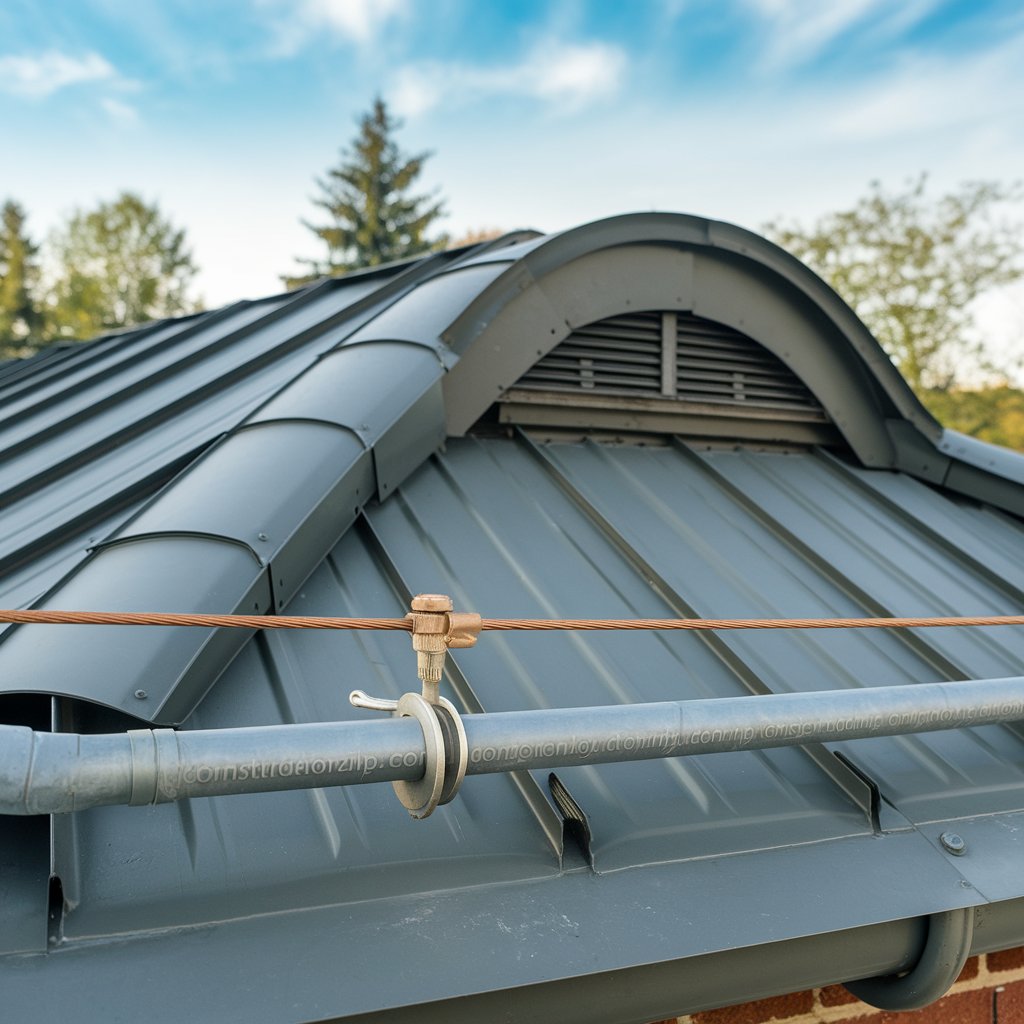
Yes! You can surely put heat cables on metal roofs but you need to use adhesive roofing tape instead of using screws to hold it in place. Moreover, you need to consider the roof ribs and seams to adjust the path of the heating tape.
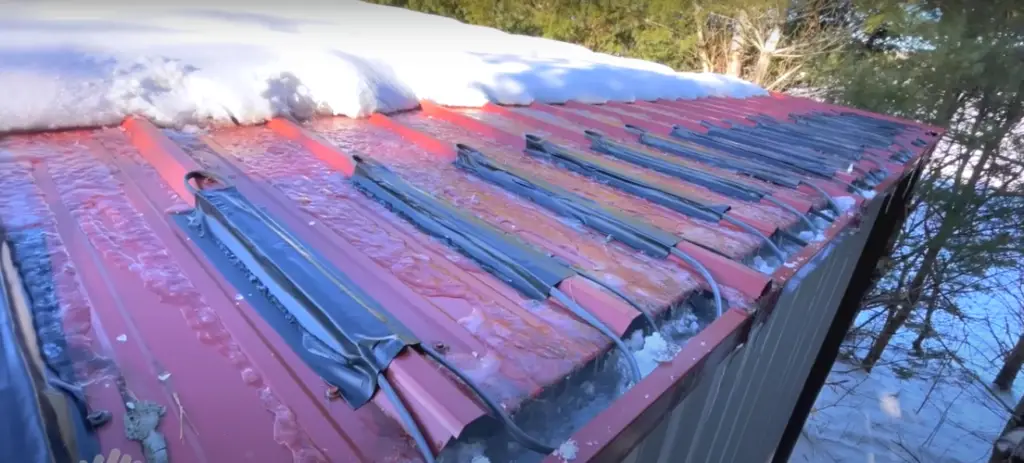
Why you need the heat cables?
When the roof insulation factors are not great, and the warm air from inside the building melts and thaws the snow on top, and it causes ice dams along the edges of the building.
Things become more critical when the pitches are low, the water can’t escape correctly, and it backs up, and it goes into the building, through the insulation, and it causes horrific damage. That’s where heat cables comes handy. Especially in commercial structures like aircraft hangers, or some warehouses.
Also Read: Shingle Roofing vs. Metal Roofing – Which Comes Out on Top?
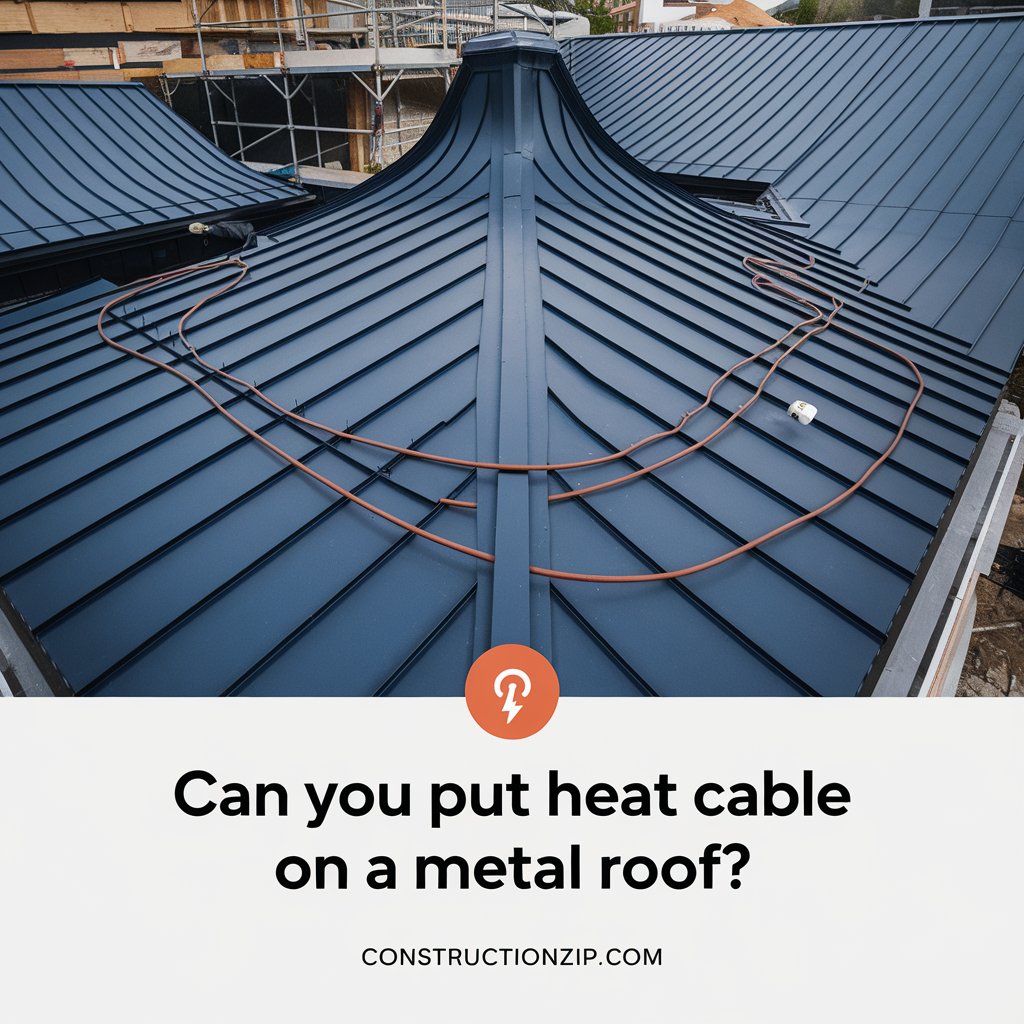
How heat cables on metal roof is still a challenge?
Heating cables aren’t designed to keep the snow off of the roof completely, they’re only designed really to keep a melt water path on the structure, on the substrate, or the shingles, in order that the water can escape safely as opposed to backing up.
On a steel roof, it’s a little bit different. We can’t zig-zag, we can’t use an angle pattern, and most metal roofs has ribs on it. There are standing seam roofs, and there are roofs that have structural ribs in them that run longitudinally.
And in this case, we are approximately 30 inches to 36 inches back from the leading edge and the gutter, and we run parallel to the ridges, and we tape the heating cables on with aluminum foil tape, and then we use another tape, it’s a roofing tape called EternaBond to hold it in place.
This negates the use of clips that have to be mounted either with an adhesive or with a screw, and we often don’t like obviously putting screws in metal roofs. In this case, we do not penetrate the structure in any manner. We also have to give that water a place to go. So, there must be a gutter that runs the length of the building, so that gutter also has to be protected. So we run the self-regulating heating cables within the gutter, and a single trace along the bottom of the gutter, and then down the downspouts. It’s critical that we continue the melt water path all the way to the point at which the water exits the building and gets out of harm’s way.

Benefits of Installing Heat Cables on a Metal Roof
1. Ice Dam Prevention
The primary benefit of installing heat cables on a metal roof is the prevention of ice dams. Ice dams form when snow melts on the warmer sections of the roof and refreezes at the colder edges or eaves. By installing heat cables, you can provide a consistent source of heat that melts the snow and prevents the formation of ice dams, reducing the risk of damage to your roof and gutters.
2. Water Drainage
Heat cables also aid in proper water drainage. As the snow and ice melt, the heat cables facilitate the flow of water off the roof and into the gutters or downspouts. This helps prevent water accumulation and reduces the chances of leaks and water damage inside the home.
Also Read:
3. Roof Protection
Installing heat cables on a metal roof can also help protect the roof itself. The continuous melting of snow and ice prevents the formation of heavy objects that can damage the roof. In addition, by preventing the formation of ice, it reduces the possibility of water infiltration which can cause corrosion, erosion and other roof damage.
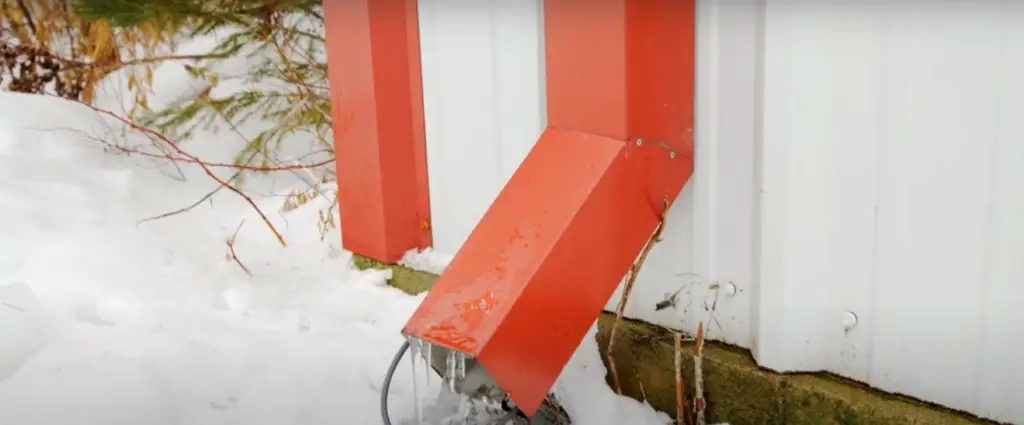
Considerations for Installing Heat Cables on a Metal Roof
While there are benefits to installing heat cables on a metal roof, several considerations should be taken into account:
1. Roof Material Compatibility
Before installing heat cables, it is crucial to ensure that they are compatible with your specific metal roof material. Consult with a professional roofing contractor or the manufacturer of the heat cables to confirm compatibility and obtain any specific installation guidelines.
2. Proper Installation
Proper installation is essential to ensure the effectiveness and safety of the heat cables. The cables should be installed in a zigzag pattern along the roof’s edges and eaves, following the manufacturer’s instructions. It is recommended to hire a professional with experience in heat cable installations to ensure proper placement and electrical connections.
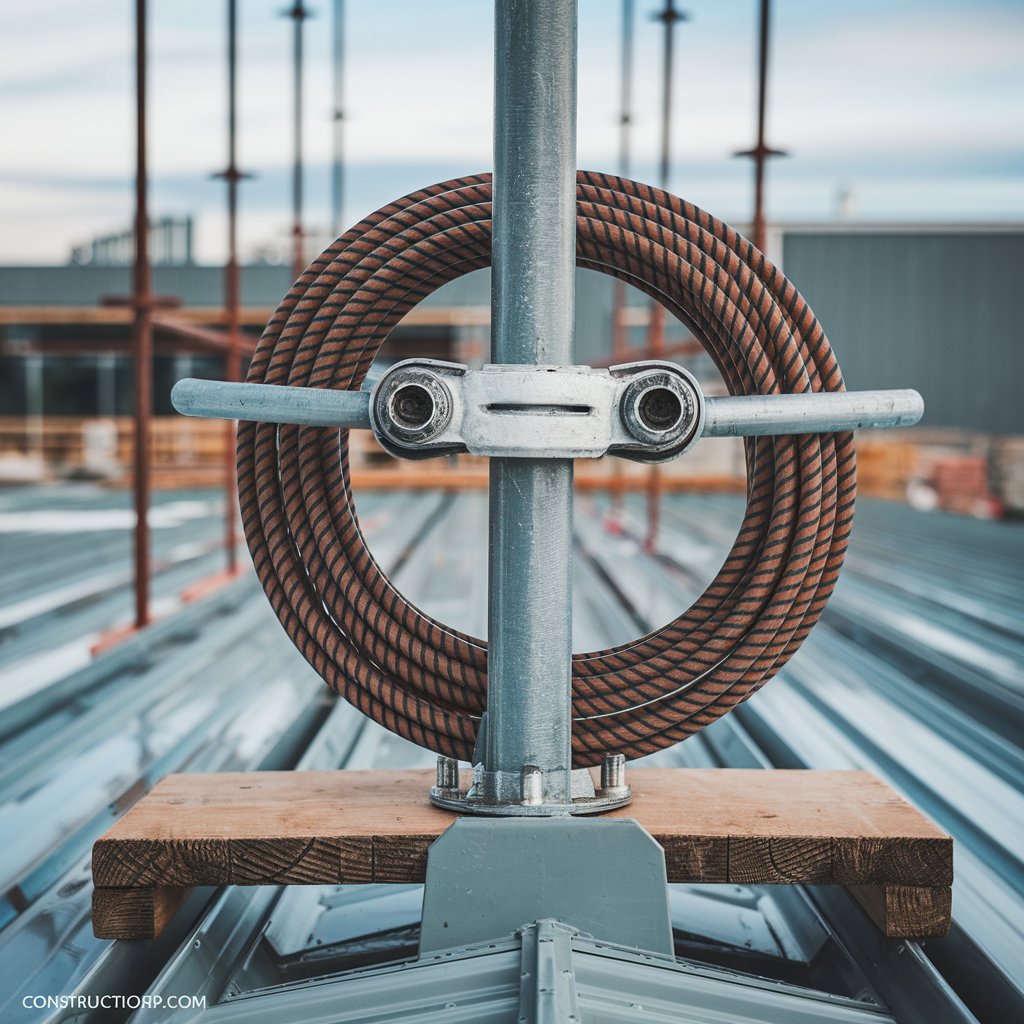
3. Electrical Considerations
Installing heat cables requires access to a power source. Ensure that the electrical system can handle the additional load of the heat cables and that the necessary electrical outlets or connections are available near the installation area. A licensed electrician can help assess the electrical requirements and ensure a safe installation.
4. Maintenance and Monitoring
Regular maintenance and monitoring are crucial when using heat cables. Inspect the cables periodically for any signs of damage or wear, and clear any debris or obstructions that may hinder their effectiveness. Additionally, it is important to monitor the weather conditions and activate the heat cables as needed to prevent ice dam formation.

Important to consider snow retention
When installing heat cable on a metal roof, you got to consider the snow retention. So, here’s a thing
When snow comes sliding off the roof, which it will, it’s going to grab and pull at anything in its way. So, the heat cable out here, it can be torn off that roof. The power and the pressure of snow when it comes sliding off can damage the entire system.
So, keep those things in mind when you install heat cable on a roof, metal roof. Make sure you install snow retention, keeping the force and the weight of snow in your mind.
Snow retention system will protect the heat cables. It’ll help your heat cable last longer, and you’re going to get a much better result if you just control everything that happens on your roof.
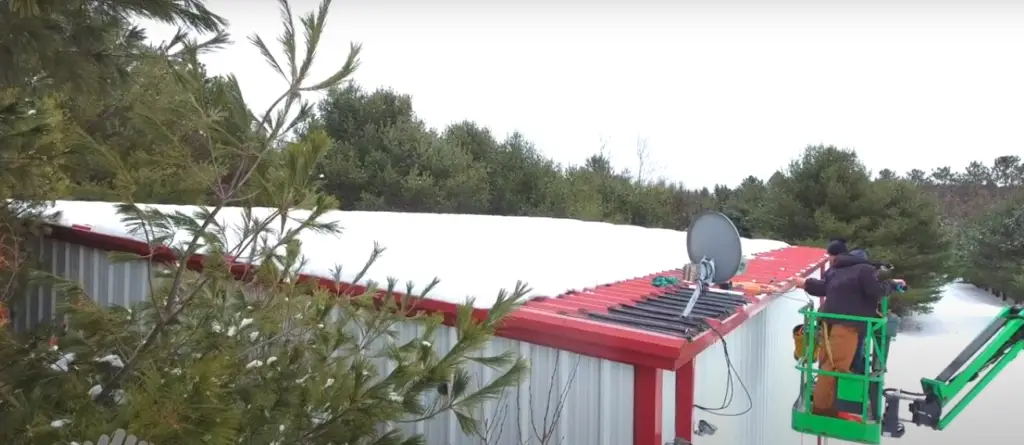
Installation of heat cables on metal roofs
- Measure the overhang or unheated portion of roof: First of all, what we need to do is, we need to measure the amount of roof that hangs out from the wall. That’s the minimum height our cable is going to go onto the roof. Because that’s the unheated portion of the roof.
- Install the cable into the gutters & Downspouts: It’s very important to get the gutter heated and the downspout heated because if the downspout isn’t heated, then the water gets to the downspout and it freezes, and then it’s trapped up at the roof level.
- Know the power connection: Now when we talk about the heating cable, that’s all fine and good, but you have to have a power connection point for that.
- Use adhesive or aluminum clips: It’s better to install the heating cable in place with the help of aluminum clip with metal fingers that hold the cable in place. That aluminum clip would hold the cable to the gutter with an adhesive pad.
- Temperature: When you’re doing these installations, you need to make sure that you install it at temperatures above 40 degrees for best results.
Pro tip: The basic premise of roof and gutter deicing is to get the snow off the roof, into a gutter, and provide a way for it to get down and onto the ground.

Conclusion
Installing heat cables on a metal roof can be an effective solution for preventing ice dams and protecting your roof from winter-related damage.
The benefits include ice dam prevention, improved water drainage, and enhanced roof protection.
However, it is essential to consider factors such as roof material compatibility, proper installation, electrical considerations, and ongoing maintenance.
By consulting with professionals and following the manufacturer’s guidelines, you can safely and effectively use heat cables to safeguard your metal roof during the winter months.


In recent years, the use of Viagra for sexual health
has gained sigbnificant attention. Erectile dysfunction (ED) is a prevalent condition that affects a large number of men worldwide.
Viagra, also known as sildenafil citrate, is a well-known medication that has been widdely used
to treat ED. This article aims to explore the mechanisms of ation of Viagra, its potential benefits ffor
sexual health, dosage and administration guidelines, considerations and prechautions for its use, aas well as
alternative options available. By understanding the science behind Viagra and its impact
on sexuql health, individuals can make informed decisioons regarding its use.
It is important to note that consulting with a healthcare
professional is crucial to ensure appropriate usage
and to address any individual concerns or underlying health conditions.
This article provides evidence-based informnation to assiist individuals in their exploration of Viagra for sexual health.